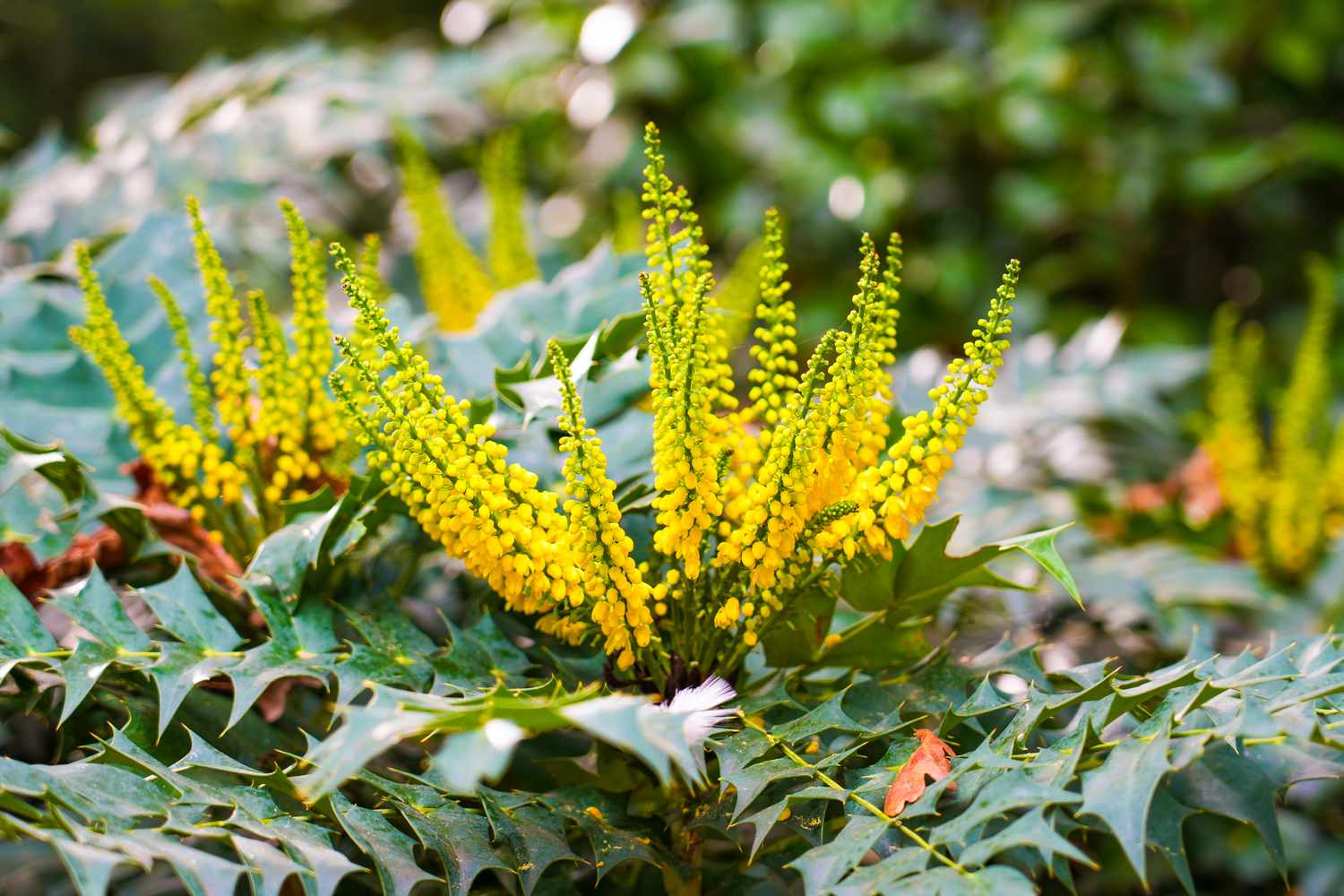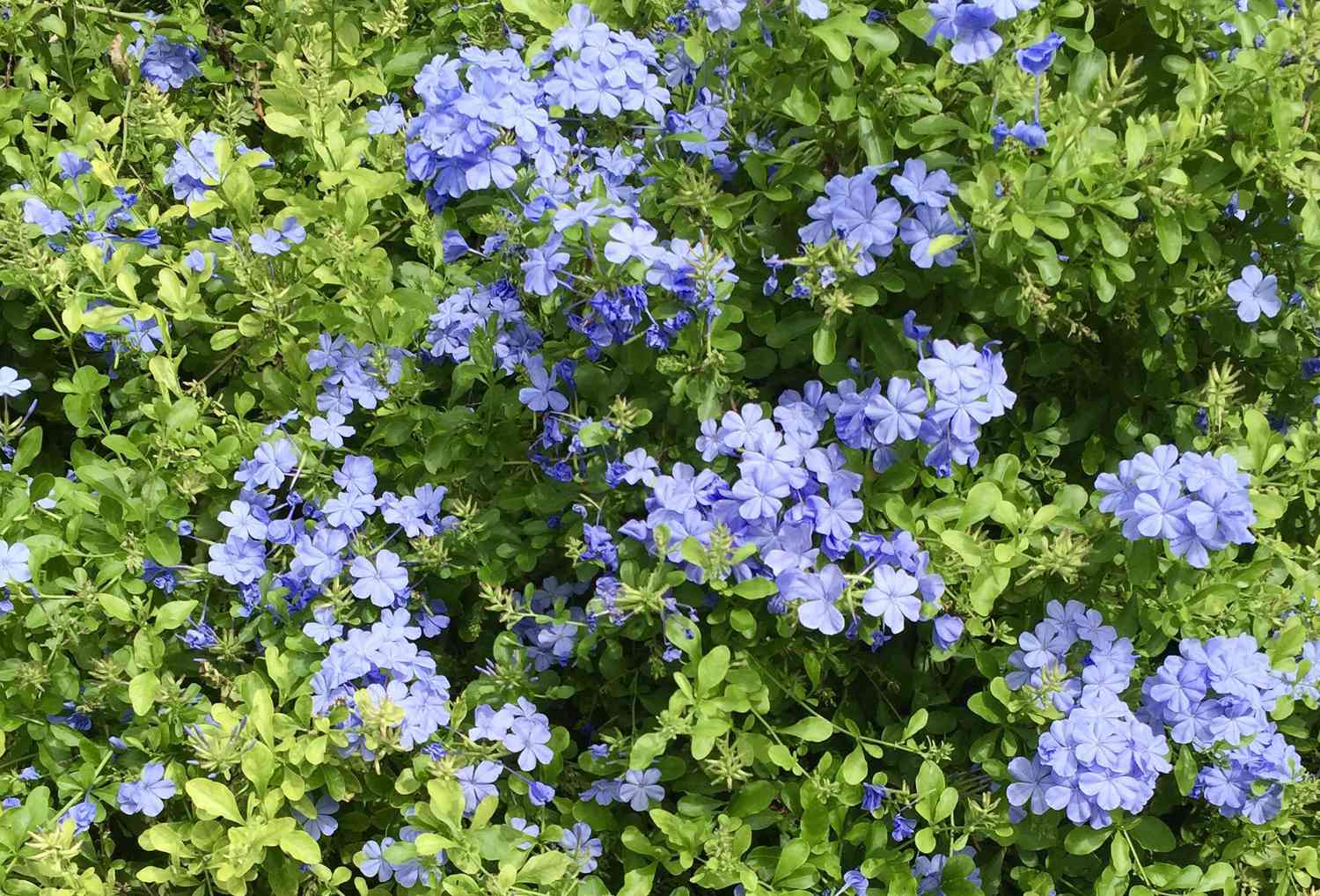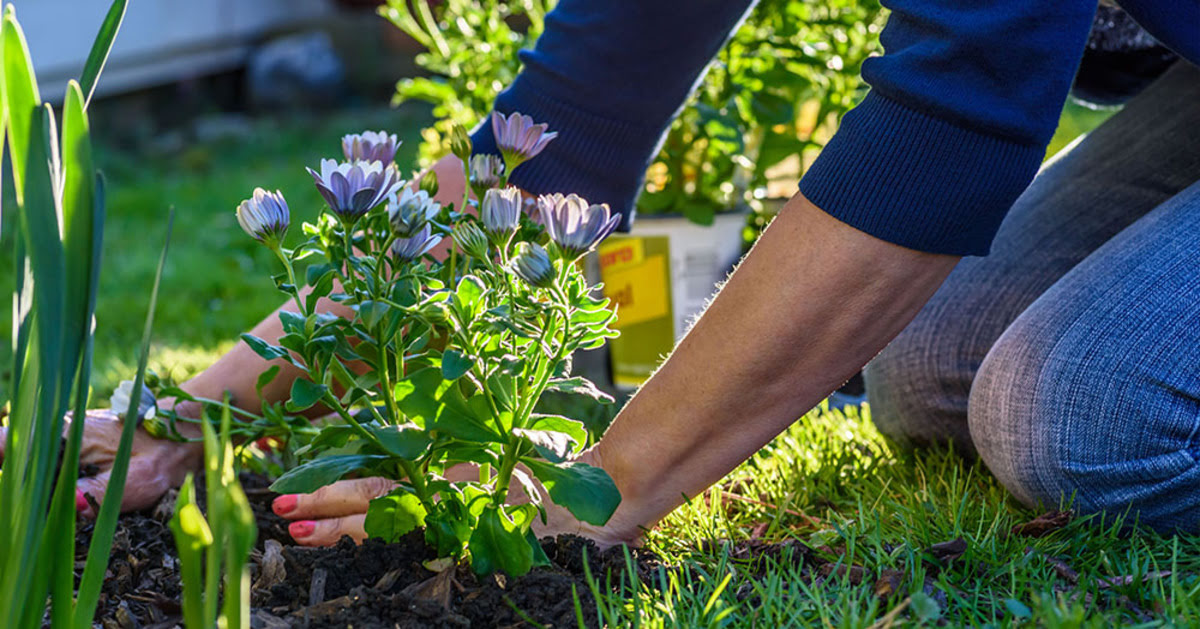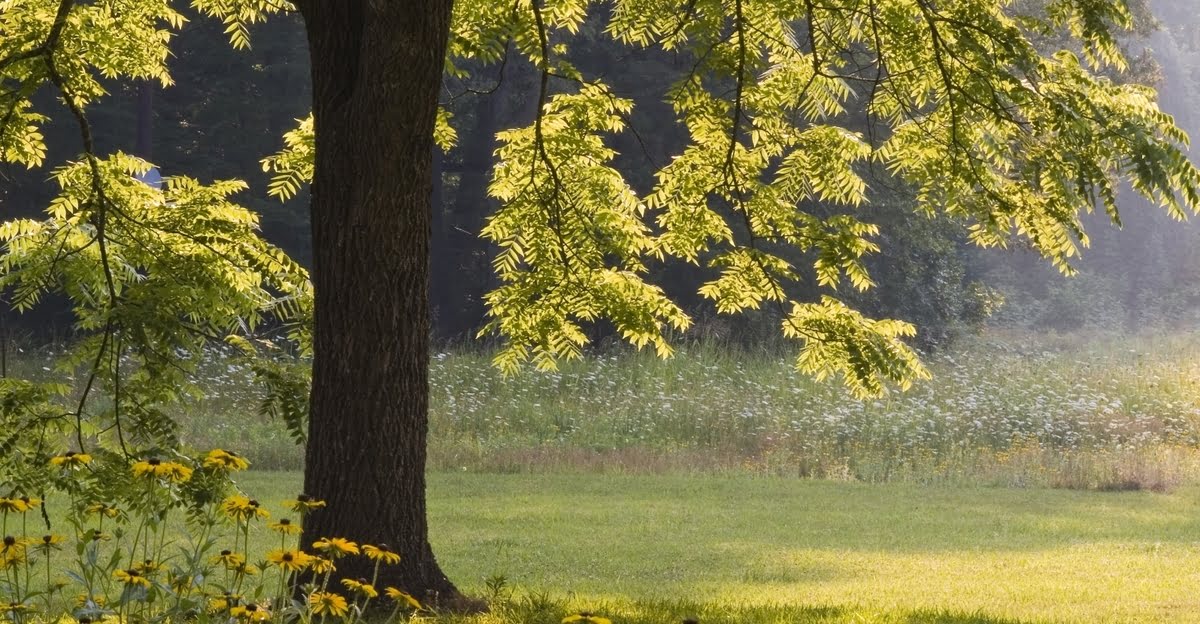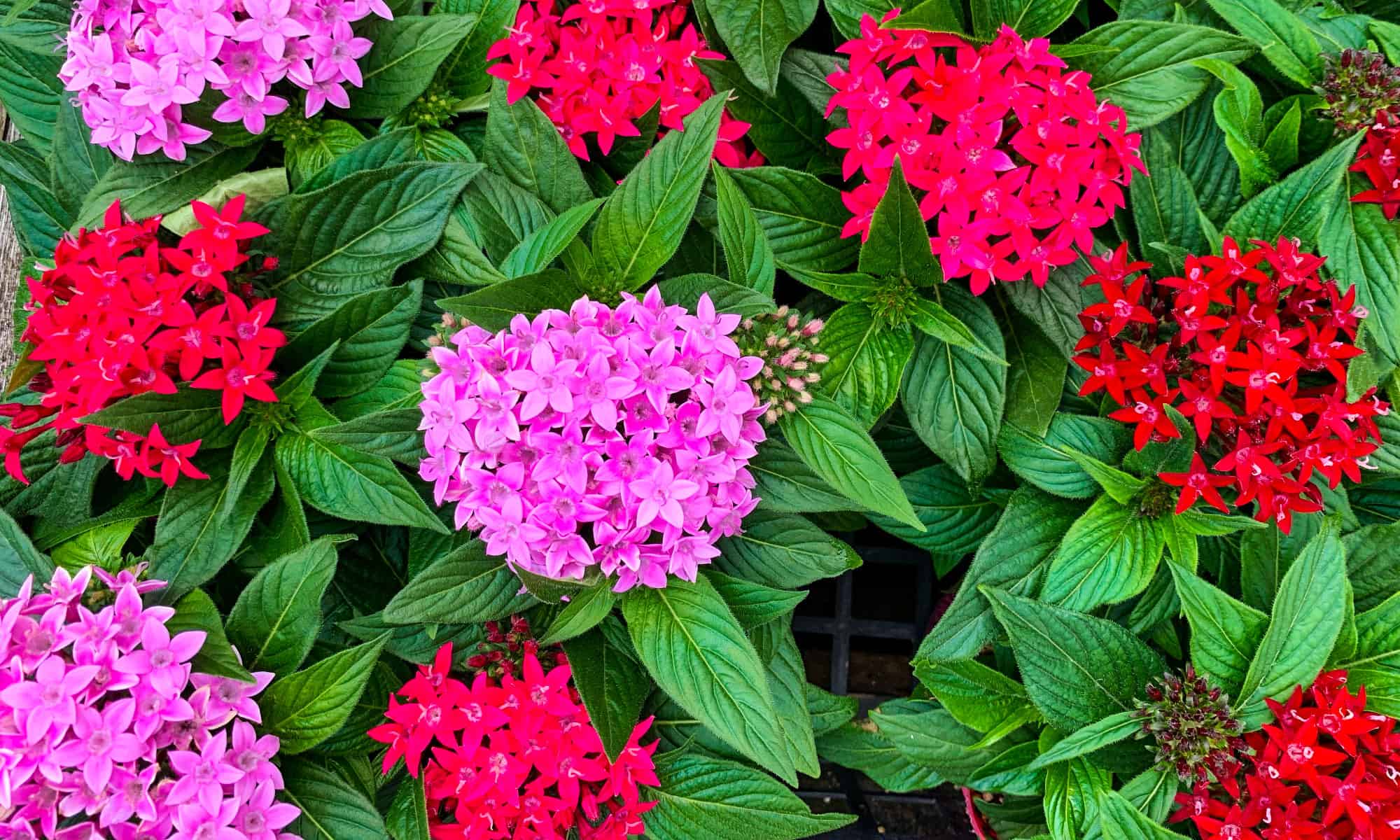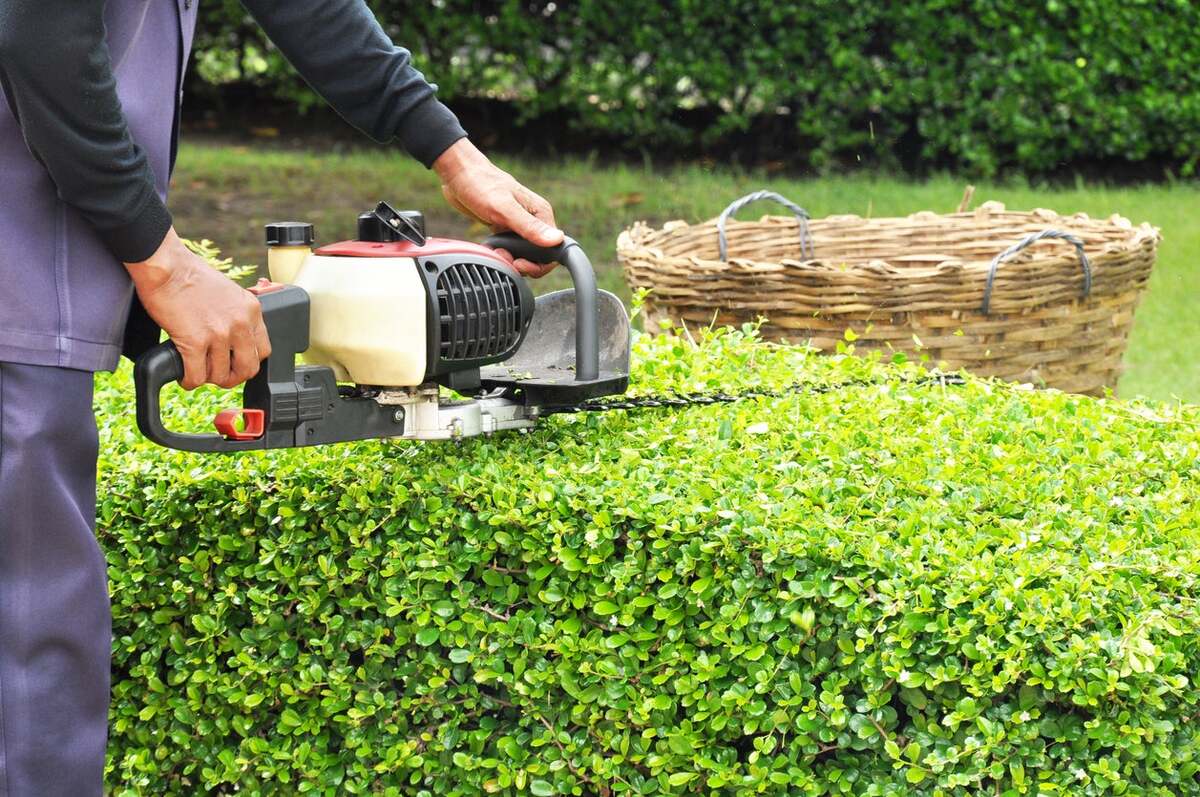Home>Gardening Techniques>Plant Care>How To Grow Spirea Shrubs
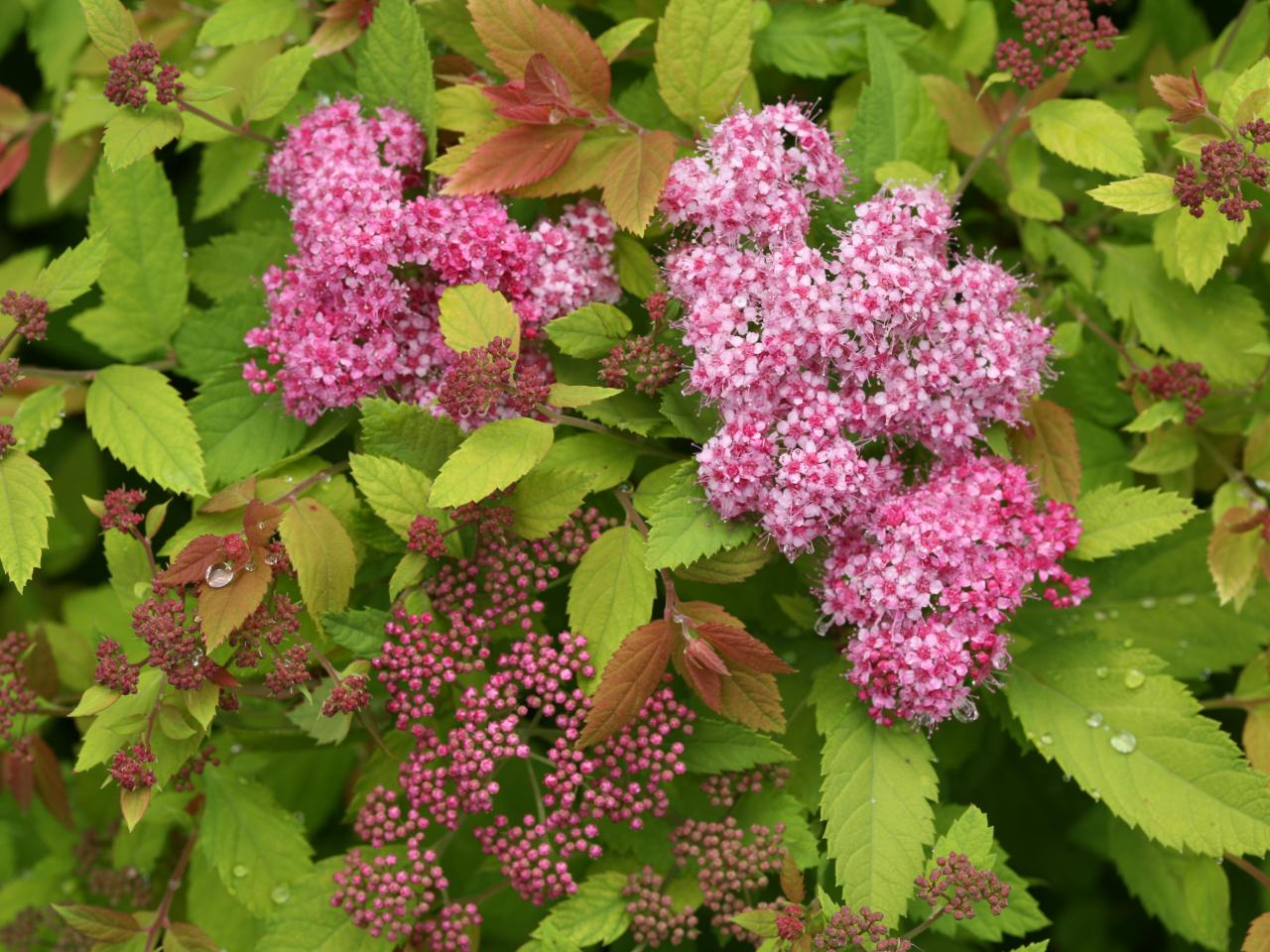

Plant Care
How To Grow Spirea Shrubs
Published: October 23, 2023
Learn how to grow spirea shrubs with our comprehensive plant care guide. Discover the best tips and techniques for maintaining healthy, vibrant spirea plants.
(Many of the links in this article redirect to a specific reviewed product. Your purchase of these products through affiliate links helps to generate commission for Chicagolandgardening.com, at no extra cost. Learn more)
Table of Contents
Introduction
Welcome to the world of spirea shrubs! These beautiful and versatile plants are a popular choice for both beginner and experienced gardeners. With their attractive foliage, stunning flowers, and easy maintenance, spirea shrubs can add color and texture to any garden or landscape.
In this comprehensive guide, we will explore everything you need to know about growing spirea shrubs. From choosing the right variety to proper planting techniques, watering and maintenance, pruning, dealing with pests and diseases, and even transplanting, we’ve got you covered.
Spirea shrubs belong to the Rosaceae family and are native to Asia and Europe. They come in a variety of sizes, shapes, and colors, making them a versatile addition to any landscape. Whether you have a small garden, a sprawling backyard, or even a balcony, there’s a spirea shrub that can suit your needs.
These hardy plants are known for their abundance of flowers, ranging from delicate white, pink, or red blossoms to clusters of vibrant summer blooms. Their foliage can also vary, with some varieties showcasing colorful autumn leaves.
Not only are spirea shrubs visually appealing, but they are also relatively easy to care for. They require minimal pruning and can tolerate a wide range of soil conditions, making them suitable for various climates. Spirea shrubs are also attractive to pollinators, such as bees and butterflies, adding a touch of nature to your garden.
So, whether you’re a seasoned gardener looking to expand your plant collection or a beginner interested in adding beauty and color to your outdoor space, growing spirea shrubs is a fantastic choice. Let’s dive in and discover the wonderful world of spirea!
Choosing the Right Spirea Variety
When it comes to selecting the right spirea variety for your garden, there are several factors to consider. Each variety has its own unique characteristics, including size, flower color, foliage, and growth habit. By choosing the right variety, you can ensure that your spirea shrubs thrive and complement the overall aesthetics of your garden.
Here are a few popular spirea varieties to consider:
- Japanese Spirea (Spiraea japonica): This is one of the most common and well-loved spirea varieties. It comes in a range of cultivars, including ‘Goldflame’ with its vibrant red and orange leaves, ‘Magic Carpet’ with its pink flowers and colorful foliage, and ‘Little Princess’ with its compact size and bright pink flowers. Japanese spirea is known for its hardiness and ability to tolerate a wide range of soil conditions.
- Bridal Wreath Spirea (Spiraea prunifolia): If you’re looking for a variety with delicate, cascading white flowers, the bridal wreath spirea is a great choice. This variety is taller and more vigorous than Japanese spirea, making it ideal for creating a stunning focal point or adding height to your garden.
- Vanhoutte Spirea (Spiraea x vanhouttei): Known for its abundant clusters of white flowers, the Vanhoutte spirea is a classic choice for many gardeners. This variety can grow quite large, so it’s perfect for filling up larger spaces or creating a natural hedge.
- Anthony Waterer Spirea (Spiraea japonica ‘Anthony Waterer’): With its striking crimson flowers and compact size, the Anthony Waterer spirea is a popular choice for adding vibrant color to your garden. It is a low-maintenance variety that is highly resistant to diseases.
- Neon Flash Spirea (Spiraea japonica ‘Neon Flash’): This variety is known for its brilliant scarlet-red flowers that bloom in mid-summer. Its compact size and disease resistance make it a perfect choice for borders, rock gardens, or containers.
Consider the specific requirements of each variety, such as sun exposure, soil type, and climate suitability, before making your decision. By choosing the right spirea variety, you can create a well-balanced and harmonious garden that is filled with the beauty and charm of these lovely shrubs.
Selecting the Planting Location
Choosing the right planting location is crucial for the success of your spirea shrubs. The right conditions will ensure that the plants thrive and flourish. Here are a few factors to consider when selecting the planting location for your spirea:
- Sunlight: Spirea shrubs generally thrive in full sun to partial shade. They require at least 6 hours of direct sunlight each day to produce abundant blooms. It’s important to choose a location with adequate sunlight to ensure the healthy growth and flowering of your spirea shrubs.
- Soil Drainage: Spirea shrubs prefer well-draining soil to prevent root rot and other water-related issues. Avoid planting them in areas with heavy clay soil or poor drainage. If you have heavy soil, consider amending it with organic matter, such as compost or peat moss, to improve drainage.
- Soil pH: Spirea shrubs thrive in slightly acidic to neutral soil, with a pH range of 6.0 to 7.5. Test the soil pH in your desired planting location and adjust it if necessary by adding amendments such as sulfur or lime.
- Protection from Harsh Elements: Consider the exposure of the planting location to harsh elements like strong winds or extreme temperatures. While spirea shrubs are generally hardy, excessive exposure to harsh conditions can affect their growth and flowering. Choose a location that provides some protection or consider using barriers, such as fences or hedges, to shield the shrubs from strong winds.
- Space Availability: Take into account the mature size of the spirea variety you have selected. Some varieties can grow quite large, while others are more compact. Ensure that there is enough space for the shrubs to reach their full size without overcrowding other plants or structures.
By carefully considering these factors, you can select the ideal planting location for your spirea shrubs. Remember to also consider the aesthetics of the location, ensuring that the shrubs will complement the overall design of your garden and enhance its beauty.
Soil Preparation
Proper soil preparation is essential for creating a favorable growing environment for your spirea shrubs. By ensuring that the soil is nutrient-rich, well-draining, and has the right pH level, you can give your spirea the best start for healthy growth. Here are some steps to follow when preparing the soil:
- Clear the Area: Begin by removing any weeds, rocks, or debris from the area where you plan to plant your spirea shrubs. Clearing the area will help minimize competition for nutrients and provide a clean space for the shrubs to establish.
- Test the Soil: It is advisable to test the soil for its pH level and nutrient content using a soil testing kit. Spirea shrubs prefer slightly acidic to neutral soil, with a pH range of 6.0 to 7.5. Based on the test results, you can make the necessary amendments to adjust the soil pH if needed.
- Amend the Soil: If the soil test reveals any deficiencies, you can amend the soil by incorporating organic matter, such as compost or well-rotted manure. This will improve the soil structure, drainage, and nutrient content. Work the organic matter into the soil to a depth of about 12 inches, ensuring it is evenly distributed.
- Improve Drainage: Spirea shrubs prefer well-draining soil to prevent waterlogged conditions and root rot. If your soil has poor drainage, consider adding perlite or coarse sand to improve the soil’s drainage capacity.
- Apply Fertilizer: Before planting your spirea shrubs, it is beneficial to apply a slow-release or balanced fertilizer to provide the necessary nutrients for their growth. Follow the package instructions for proper application rates and methods.
By taking the time to properly prepare the soil, you will create a nutrient-rich and well-draining environment that will support the healthy growth and development of your spirea shrubs.
Planting Spirea Shrubs
Now that you have your spirea shrubs and a well-prepared planting area, it’s time to get them into the ground. Proper planting techniques will ensure that your spirea shrubs establish themselves successfully and thrive. Follow these steps to plant your spirea shrubs:
- Dig the Hole: Dig a hole that is slightly wider and deeper than the root ball of the spirea shrub. This will give the roots ample space to spread out and establish themselves.
- Position the Shrub: Gently place the spirea shrub into the hole, making sure it is positioned upright. The top of the root ball should be level with or slightly above the surrounding soil.
- Backfill: Fill the hole with the soil mixture, making sure to eliminate any air pockets. Lightly tamp down the soil as you go to ensure good soil-to-root contact.
- Water Thoroughly: Give the newly planted shrub a thorough watering to settle the soil and help the roots establish.
- Mulch: Apply a layer of mulch around the base of the spirea shrub, leaving a small gap around the trunk. Mulch helps retain moisture, control weeds, and regulate soil temperature.
- Spacing: Ensure that you space the spirea shrubs according to the recommended guidelines for the specific variety you have chosen. This will allow enough room for the shrubs to grow and prevent overcrowding.
It’s important to note that while spirea shrubs are generally low-maintenance, they still require regular watering and care, especially during their initial establishment period. Keep an eye on the moisture levels of the soil and water as needed, ensuring that the soil remains evenly moist but not waterlogged.
By following these steps, you can ensure a successful planting process for your spirea shrubs, setting them up for healthy growth and vibrant blooms in the seasons to come.
Watering and Maintenance
Proper watering and maintenance are essential for the health and vitality of your spirea shrubs. By following a regular watering schedule and providing necessary care, you can ensure that your plants thrive and continue to beautify your garden. Here are some guidelines to keep in mind:
- Watering: Spirea shrubs require regular watering, especially during hot and dry periods. Provide deep, thorough waterings to ensure the moisture reaches the roots. Aim to keep the soil consistently moist but not waterlogged. Avoid overwatering, as it can lead to root rot and other issues. Mulching around the base of the shrubs can help retain moisture and reduce the frequency of watering.
- Fertilizing: Spirea shrubs benefit from regular fertilization to maintain healthy growth and abundant blooms. Apply a balanced, slow-release fertilizer in early spring as new growth emerges. Follow the package instructions for proper application rates and techniques. Avoid over-fertilizing, as it can lead to excessive leaf growth and a reduction in flower production.
- Pruning: Regular pruning is important for maintaining the shape and vigor of your spirea shrubs. Prune them immediately after flowering to remove spent blooms, promote bushier growth, and encourage new flower buds for the following season. Use clean and sharp garden shears to make the cuts, and remove any dead, damaged, or crossing branches. Take care not to over-prune, as it can affect the overall health and flowering of the shrubs.
- Weeding: Keep the area around your spirea shrubs free from weeds. Weeds can compete with the shrubs for nutrients and water, stunting their growth. Regularly inspect the area and remove any weeds that may have sprouted.
- Pest and Disease Control: Monitor your spirea shrubs for any signs of pests or diseases, such as aphids, spider mites, or powdery mildew. Treat any infestations promptly using appropriate insecticides or fungicides, following the instructions on the product label. Regularly inspecting the shrubs and maintaining good plant hygiene can help prevent pest and disease issues.
- Winter Protection: In colder climates, protect your spirea shrubs during the winter months. Apply a layer of organic mulch around the base of the plants to insulate the roots and protect them from frost damage. You can also create a simple burlap screen or wrap the shrubs in burlap to shield them from harsh winter winds.
By adhering to these watering and maintenance practices, you can ensure the long-term health and beauty of your spirea shrubs. Regular care will promote vigorous growth, abundant flowering, and create a stunning focal point in your garden.
Pruning Spirea Shrubs
Pruning is a crucial aspect of caring for spirea shrubs and plays a significant role in maintaining their shape, health, and overall appearance. Regular pruning helps remove dead wood, rejuvenate the shrub, and encourage new growth and abundant flowering. Here are some guidelines to follow when pruning your spirea shrubs:
- Timing: Prune spirea shrubs immediately after they finish flowering. This is typically in late spring or early summer, depending on the specific variety and climate. Pruning after flowering ensures that you don’t inadvertently remove next season’s flower buds.
- Tools: Use clean and sharp garden shears or pruners for the pruning process. Clean cuts minimize damage to the plant and reduce the risk of disease transmission. Sterilize your pruning tools by wiping them with rubbing alcohol or a disinfectant before and after use.
- Removal of Dead Wood: Start by removing any dead, damaged, or diseased branches. These can be easily identified by their lack of foliage, brittle texture, or discoloration. Cut the branches back to healthy and live wood, making clean and angled cuts just above a bud or branch collar.
- Thinning: Thinning out the shrub helps improve air circulation and light penetration, reducing the risk of diseases and promoting healthier growth. Selectively remove a few of the older and thicker branches from the center of the shrub to create an open and airy structure. This allows for better light penetration and encourages new growth from the base of the plant.
- Reducing Height and Shape: If you want to control the height or shape of your spirea shrub, you can trim the branches accordingly. Make cuts just above a bud or lateral branch to encourage new growth in the desired direction. Keep in mind the natural growth habit of the variety you are pruning and aim for a balanced and aesthetically pleasing shape.
- Regular Maintenance Pruning: As your spirea shrubs continue to grow, it’s important to perform regular maintenance pruning to keep them in shape. Remove any crossed or rubbing branches to prevent damage and potential disease entry points. Additionally, selectively prune to maintain the size and density of the shrub as desired.
Remember, while pruning is an essential part of spirea shrub care, it’s important not to over-prune. Avoid removing more than one-third of the shrub’s overall growth in a single pruning session. Over-pruning can lead to stress on the plant and reduce its ability to produce flowers.
By following these pruning guidelines, you can encourage healthy growth, enhance the appearance of your spirea shrubs, and ensure an abundance of beautiful blooms for seasons to come.
Dealing with Pests and Diseases
Just like any other plants, spirea shrubs are susceptible to certain pests and diseases. Being aware of common issues and taking proactive measures can help you maintain the health and beauty of your shrubs. Here are some potential pests and diseases that can affect spirea shrubs and how to deal with them:
- Aphids: Aphids are small, soft-bodied insects that feed on the sap of spirea leaves and stems. They can cause curling or yellowing of leaves and the presence of sticky honeydew. To control aphids, you can try spraying the affected plant with a strong jet of water to dislodge them or use insecticidal soap or neem oil as organic control options. If the infestation is severe, consult with a local garden center for appropriate chemical treatments.
- Spider Mites: Spider mites are small pests that suck the sap from leaves, causing stippling and discoloration. They thrive in dry conditions. Regularly misting your spirea shrubs to increase humidity can help deter spider mites. If a spider mite infestation is detected, you can try spraying the shrubs with a fine mist of water to remove them or use insecticidal soap or horticultural oil for control.
- Scale Insects: Scale insects are small, immobile pests found on stems and leaves of spirea shrubs. They produce a protective cover that resembles scales, hence their name. If the infestation is minor, you can scrape them off manually. For heavier infestations, insecticidal soap or horticultural oil can be used. It’s important to note that controlling scale insects can be challenging, and professional assistance may be required for severe infestations.
- Powdery Mildew: Powdery mildew is a fungal disease that appears as a white, powdery coating on the leaves of spirea shrubs. It thrives in warm and humid conditions. To control powdery mildew, ensure proper air circulation by spacing plants adequately. Remove and dispose of infected plant parts, and avoid overhead watering. Fungicidal sprays can be used as a preventive or curative measure, following the product instructions carefully.
- Leaf Spot Diseases: Leaf spot diseases are fungal infections that result in dark spots or lesions on spirea leaves. To minimize leaf spot diseases, avoid overhead watering and ensure good air circulation. Remove and discard infected leaves, and consider applying fungicidal sprays as a preventive measure.
- Root Rot: Root rot is a fungal infection caused by overly wet or poorly drained soil. It can lead to yellowing leaves, wilting, and root decay. To prevent root rot, ensure proper soil drainage by amending heavy soils and avoiding overwatering. If root rot is detected, consult with a professional for appropriate treatment options.
Regularly inspecting your spirea shrubs for any signs of pests and diseases is crucial for early detection and effective control. Proper cultural practices, such as maintaining good plant hygiene, providing adequate air circulation, and avoiding excessive moisture, can go a long way in preventing and managing pest and disease problems.
If you’re uncertain about the specific pest or disease affecting your spirea shrubs, it’s advisable to consult with a local nursery or a professional horticulturist to identify the issue and receive proper guidance on treatment options.
Transplanting Spirea Shrubs
There are several reasons why you might need to transplant your spirea shrubs. Whether you’re redesigning your garden, moving to a new home, or simply want to relocate the shrubs, proper transplanting techniques will ensure their successful transition. Here are some guidelines to follow when transplanting spirea shrubs:
- Timing: The best time to transplant spirea shrubs is during their dormant season, typically in late fall or early spring. Transplanting during these periods allows the shrubs to establish their root systems before the onset of hot or dry weather.
- Preparing the New Location: Choose a new planting location that meets the same requirements as the original one in terms of sunlight, soil type, and drainage. Prepare the new hole before digging up the spirea shrub from its current location. Ensure the new hole is wider and deeper than the shrub’s root ball.
- Transplanting Process: Start by watering the shrub thoroughly a day or two before transplanting to ensure the soil is adequately moist. Carefully dig around the dripline of the shrub, creating a root ball that encompasses the majority of the root system. Lift the shrub from the ground, taking care not to damage the root ball.
- Planting in the New Location: Place the spirea shrub into the prepared hole in the new location, ensuring it is positioned at the same level it was previously planted. Backfill the hole with soil, firming it gently around the root ball. Water the newly transplanted shrub thoroughly to settle the soil and remove any air pockets.
- Post-Transplant Care: After transplanting, provide extra care and attention to the shrub. Ensure the soil remains consistently moist but not waterlogged during the establishment period. Mulch around the base of the shrub to conserve moisture and suppress weed growth. Monitor the shrub for signs of stress and provide additional watering during hot or dry periods.
- Trimming: It’s advisable to trim back the branches of the spirea shrub after transplanting. This helps reduce stress on the plant and allows it to focus its energy on establishing new roots rather than supporting excessive foliage. Trim the branches back by about one-third, making clean cuts just above a bud or branch junction.
Transplanting can be stressful for spirea shrubs, so it’s important to provide extra care and attention during the establishment period. Keep in mind that it may take some time for the shrub to fully recover and resume normal growth and flowering. However, with proper care and patience, your transplanted spirea shrub should thrive in its new location.
Conclusion
Growing and caring for spirea shrubs can be a rewarding experience that adds beauty and color to your garden or landscape. By choosing the right variety, providing proper planting conditions, and following good maintenance practices, you can enjoy the vibrant flowers and attractive foliage of these versatile plants.
When selecting a spirea variety, consider factors such as size, flower color, and growth habit to find the perfect fit for your garden. Once planted, ensure the shrubs receive adequate sunlight, have well-draining soil, and are protected from harsh elements. Proper watering, fertilization, pruning, and prevention and treatment of pests and diseases are essential for the long-term health of your spirea shrubs.
Remember to regularly monitor your spirea shrubs for signs of pests or diseases and take prompt action to address any issues. Adhering to a consistent maintenance routine, including pruning and providing proper care, will help your shrubs stay healthy and vibrant.
Whether you’re a beginner or an experienced gardener, spirea shrubs are an excellent choice for adding visual interest and color to your outdoor space. With their hardiness and versatility, they can thrive in various climates and suit a range of gardening styles or preferences. By following the guidelines provided in this article, you can confidently grow and care for spirea shrubs, creating a picturesque garden filled with their stunning blooms and lush foliage.
